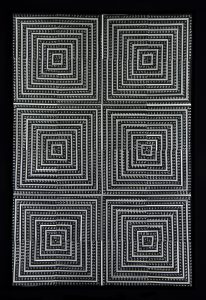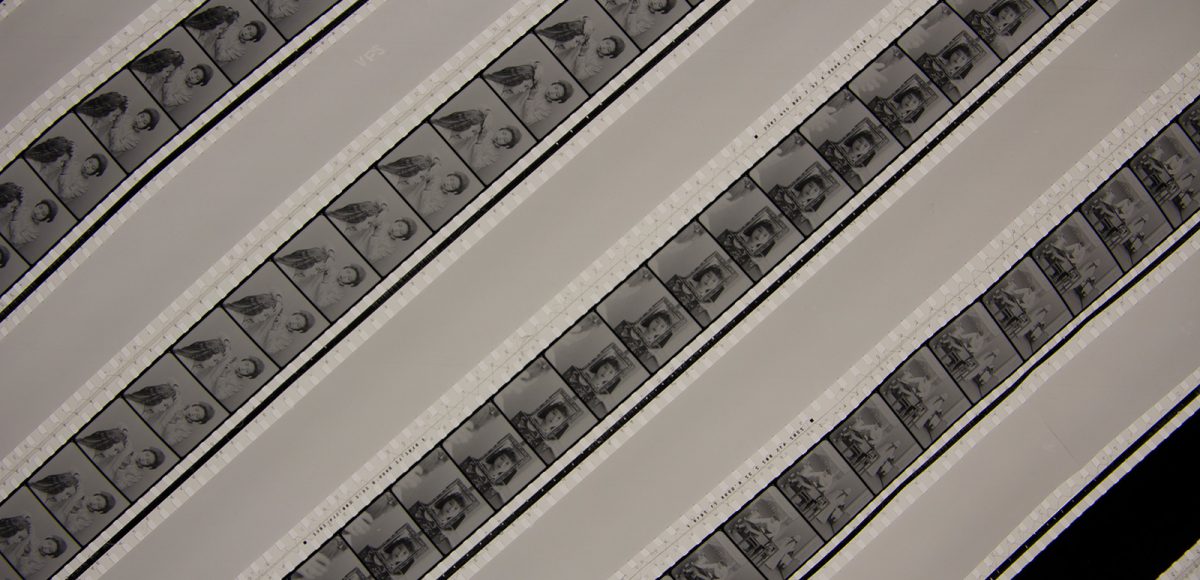May 23-July 14, 2019
Los Angeles Municipal Art Gallery, Barnsdall Park
Frank Lloyd Wright’s Hollyhock House and a stunning view of the Hollywood Hills create a beautiful backdrop for the LA Municipal Art Gallery and, by default, its most recent exhibition; a multi-media group show of new work by the mid-career artists receiving COLA grants this year. With eleven artists participating and no stated curatorial theme, Los Angeles emerges as an underlying element that loosely links the art works together. Although none of the artists were born in LA — they hail from cities around North America and Europe — every fellow now resides in the city.
The gallery’s entrance is permeated by Stephanie Taylor‘s looped sound piece, “Municipal Art Song.” With a deep, enthusiastic voice, Ian Walker is heard singing lyrics that, according to the wall text, are meant to be “a gently humorous look at the poetry of bureaucratic language.” Taylor drew her lyrics from press releases generated from LA’s Department of Cultural Affairs. The catchy rhythms of the song cultivate a fun, positive energy that circulates throughout the exhibition.
Indispensable wall texts guide viewers to contemplate each work on its own terms. Artists’ intentions and motivations are emphasized, as seen in the text for Jenny Yurshansky‘s installation piece, “A Legacy of Loss (Shroud).” Here, viewers are told that the primary hanging object in the room is a cloth rubbing from the artist’s great-grandfather’s towering headstone in Moldova, from where most of her family escaped persecution. As viewers read Yurshansky’s family story — from within the safe space of the gallery — they become empathetic and perhaps more aware of the struggles other refugees experience.
 Jenny-Yurshansky_Legacy-of-Loss-(Shroud)_Detail
Jenny-Yurshansky_Legacy-of-Loss-(Shroud)_Detail Sabrina-Gschwandtner_Cinema-Sanctuary-Study-2—Alice-Guy-Blache’s-1897-Serpentine-Dance-By-Mrs.-Bob-Walter
Sabrina-Gschwandtner_Cinema-Sanctuary-Study-2—Alice-Guy-Blache’s-1897-Serpentine-Dance-By-Mrs.-Bob-Walter Sabrina-Gschwandtner_Sanctuary-Study-1_Close-Up-4
Sabrina-Gschwandtner_Sanctuary-Study-1_Close-Up-4 Sabrina-Gschwandtner_Cinema-Sanctuary-Study-2_Close-Up-1
Sabrina-Gschwandtner_Cinema-Sanctuary-Study-2_Close-Up-1 Sandy-Rodriguez_Rainbows,-Grizzlies-and-Snakes,-Oh-My!—Conquest-to-Caging-in-the-City-of-Los-Angeles-(diptych,-right-side)
Sandy-Rodriguez_Rainbows,-Grizzlies-and-Snakes,-Oh-My!—Conquest-to-Caging-in-the-City-of-Los-Angeles-(diptych,-right-side) Kim-Fisher_Woman-Behind-Rocks
Kim-Fisher_Woman-Behind-Rocks Kim-Fisher_installation-view,-Torn-Vermillion,-Torn-Nickel-Yellow,-Very-Good-Genes,-Dum-Dums-(Peach-Mango)
Kim-Fisher_installation-view,-Torn-Vermillion,-Torn-Nickel-Yellow,-Very-Good-Genes,-Dum-Dums-(Peach-Mango) Katie-Grinnan_5-Seconds-of-Dreaming
Katie-Grinnan_5-Seconds-of-Dreaming Juan-Capistrán’s-Psychogeography-Of-Rage-(the-riot-inside-me-raged-on)
Juan-Capistrán’s-Psychogeography-Of-Rage-(the-riot-inside-me-raged-on)
Juan Capistrán‘s large, red brick-like sculptures appear to be pristine Minimalist descendants, but they belong to a group of objects and photographs that carry the subtitle “Psychogeography of Rage.” Together they evince the devastation of post-Los Angeles Riot neighborhoods. This is where Capistrán grew up. And this series represents his chronicle of violence and displacement.
In this vein, Sandy Rodriguez presents “Rainbows, Grizzlies and Snakes, Oh My! — Conquest to Caging in Los Angeles (diptych).” Employing detailed watercolor strokes to devise a map, Rodriguez diagrams the harrowing history of what is now LA. Simultaneously, however, her charming imagery of plants and animals, combined with an overhead rainbow, evoke an aura of hope.
There is hardly any art for art’s sake in this exhibition. Even Kim Fisher’s large, colorful Pop collage, “Los Angeles Hedge,” touches upon issues of class and gender. And Sabrina Gschwandtner‘s three gorgeous, abstract works, which share the subtitle “Cinema Sanctuary Study,” aim to bring awareness to accomplished, yet, near forgotten women film directors: Marion E. Wong, Alice Guy-Blaché and Germaine Dulac. Pieces of their reprinted films are sewn together by Gschwandtner who constructs patterns reminiscent of historic quilt-design; work traditionally associated with women.
Although most of the honored artists tackle knotty issues, there remains a touch of optimism, especially related to the joy of art-making itself. But also in the concept that knowing each other’s history or personal situation may possibly lead to mutual understanding and towards a deeper sensibility of shared community.









